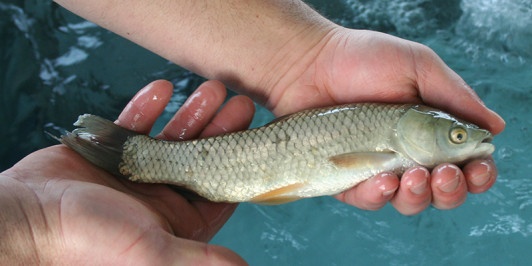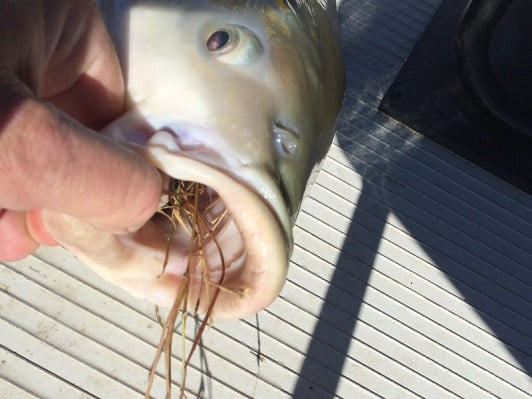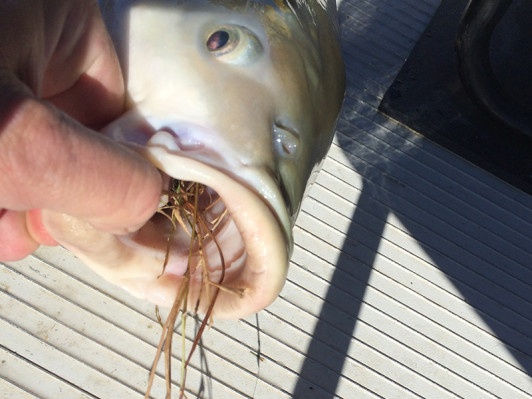Grass Carp are a fish that many people have heard about, but don’t know if they are a good fit for their pond. Grass Carp can be a desirable fish to stock in the right situations but the question most pond owners ask, is; “How do you know if Grass Carp are right for my Pond?”
Older Ponds and Shallow Lakes are Prime Candidates for Grass Carp
In aging ponds, shallow water can become problematic because it is the perfect environment for aquatic vegetation - which can easily grow out of control. If your lake is susceptible to these vegetation issues, Grass Carp may be a relatively inexpensive and effective biological solution to your weed problem.

How Do Grass Carp Manage Pond and Lake Vegetation?
Grass Carp feed on some types of submerged vegetation, and can eat their body weight in aquatic plants every day.
In Texas waters, Grass Carp can live 10 years or longer, consuming a great deal of vegetation during their lifetime. They grow rapidly, often exceeding 60 pounds, and the larger the Grass Carp grow, the more effective they become at controlling vegetation.
Carp effectively control vegetation until they reach about age 7, after which their decreased metabolism causes them to consume less.
Are there Limitations on Grass Carp Stocking?
In Texas, there are parameters involved in obtaining Grass Carp. These fish are considered an invasive species, and are illegal to have without a permit. The permit can be obtained through the Texas Parks and Wildlife Department with a quick assessment of your lake. This process went completely online near the end of 2020 and the review process can sometimes take up to 4 to 6 weeks to complete - so you may want to visit the TPWD website late in January to make sure you have your permit in time for the summer.
Only Triploid Grass Carp can Be Stocked in Texas
Grass Carp must be triploid (or sterile) to be legal for purchase as well. We know what your thinking, “if the fish must be sterile, why do I need a permit?” These fish are permitted so that TPWD can keep track of the location and number of grass carp in the environment.
Waterways that Should NOT Stock Grass Carp
Impoundments on permanently flowing creeks, or those that overflow frequently, should not be stocked with triploid grass carp unless they can be effectively screened.
This means using a minimum of a 2” sq. mesh material over pipe or earthen spillways. Preventing escape helps protect beneficial aquatic vegetation in our public waters.
Although triploid grass carp cannot reproduce, they can live for years, potentially migrate to sensitive areas, and consume a great deal of vegetation.
Consider Carp for Effective Pond Management
In the right ponds, Grass Carp are a cost efficient tool to manage your pond, and can really improve the quality of fishing. However, it is important to know how many you need, and if the vegetation is correct for stocking Grass Carp. Bushy pondweed, American pondweed, and hydrilla are preferred foods. Grass carp are not effective for bulrush, filamentous algae (pond scum or moss), water primrose, coontail, Eurasian milfoil, or cattails.
Pond King is the Texas Choice for Aquatic Vegetation Management
The fisheries biologists of Pond King are always ready to provide you with more information about stocking your pond or lake with Grass Carp for vegetation control.
Feel free to call or contact a member of our team to begin your pond or lake management plan! We can tailor your pond’s vegetation control to match your needs.
Happy Fishing!
Brad Metzler, President
Editor's Note: Originally published January, 2016, this blog was updated in January 2021 for freshness, accuracy and comprehensiveness.




